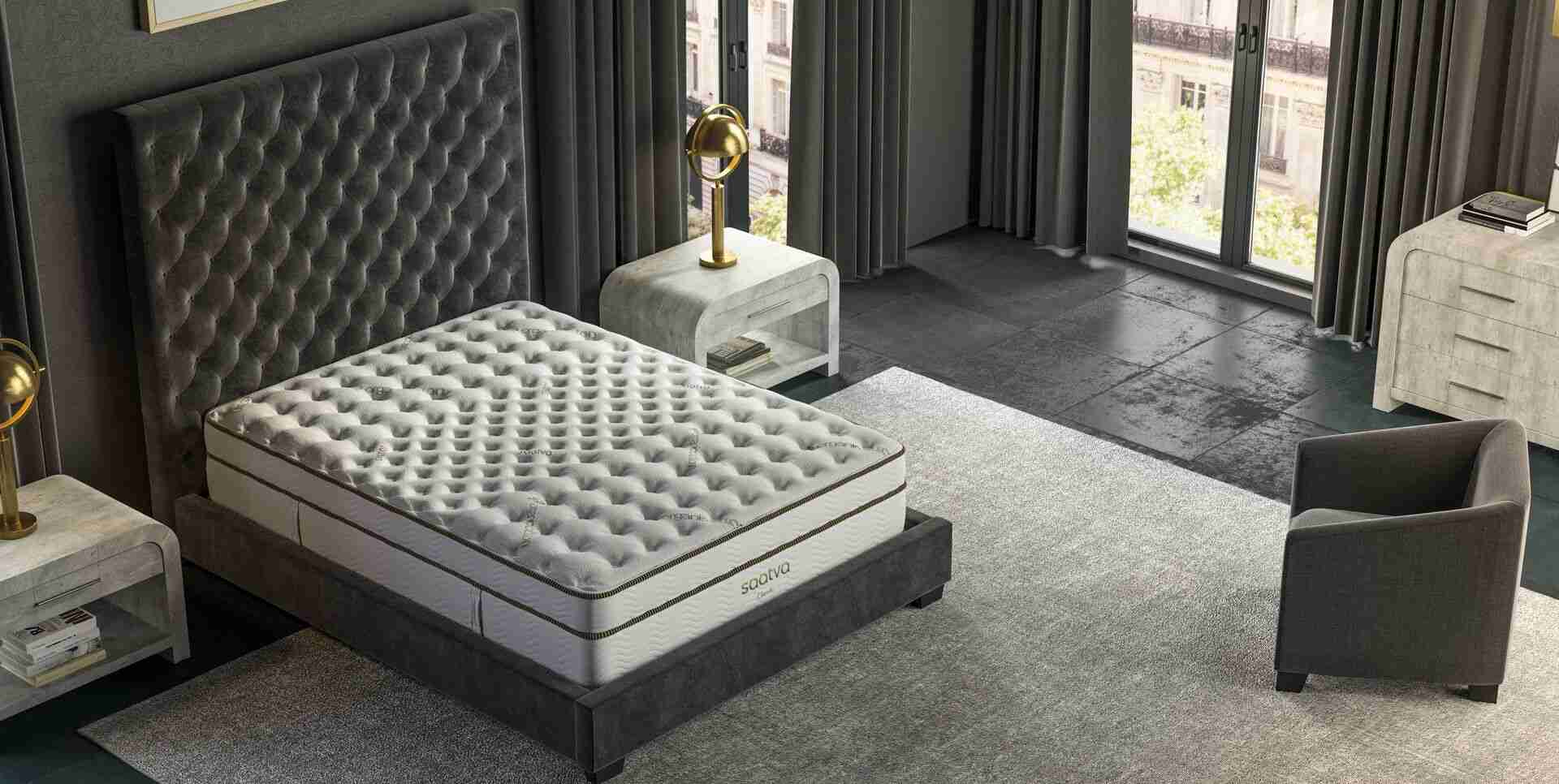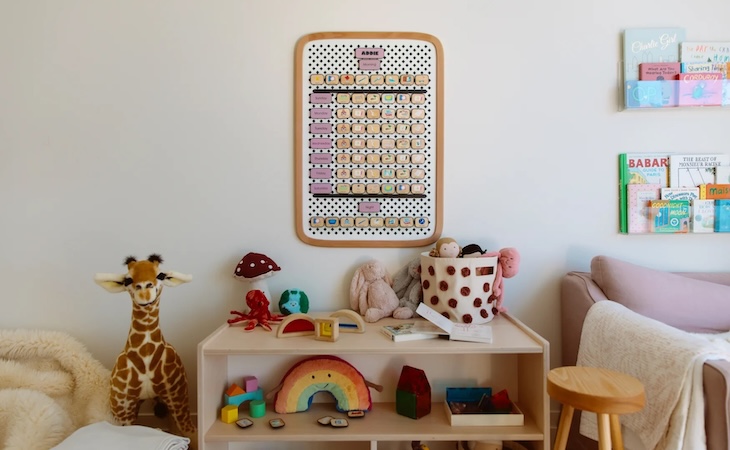It’s not always easy to share a bed with someone else. In fact, a Saatva survey found that issues like snoring, sheet-stealing, pets in the bed, and mattress comfort level disagreements are just a few of the issues that plague partners trying to get shut-eye together.
If that sounds familiar, you’re not alone. The Better Sleep Council reports that on average, one in three Americans say that their bed partner negatively impacts their sleep. All that lost sleep can have big consequences. “Your relationships, your health, your well-being, and quality of life depend upon sufficient sleep,” explains Terry Cralle, RN, certified clinical sleep educator. “Couples should optimize their sleep quality to ensure a great relationship.”
Ready for some help? Whether you sleep with a Sheet Stealer, a Night Owl, or a Constant Cuddler, many of the difficulties of sleeping with a partner can be overcome. Here are eight common scenarios and what to do about them.
The snorer
Without a doubt, snoring wins the award for being the most common sleep disruptor among couples. “A non-snoring bed partner can wake up as many as 20 times per hour as the result of a snoring bed partner,” says Calle. That can add up to an average of an hour of lost sleep every night!
What to do: For some relief, the snorer can try avoiding alcohol in the evenings, sleeping on their side, or elevating their head at night. A partner can try earplugs or a white noise machine. While occasional snoring may be a mere inconvenience, heavy, consistent snoring may be a sign of obstructive sleep apnea, which should be addressed by a sleep professional. (It’s often the non-snorer who is the reason sleep apnea is diagnosed since the snorer isn’t aware of their condition.)
Encouraging your snoring partner to meet with a healthcare professional to assess the situation helps everyone enjoy improved quality—and quantity—of sleep. One study found that when the snorer received treatment to lessen snoring, the amount of sleep their partner got increased by 13%.
The sheet-stealer
If you’ve ever woken up in the middle of the night, huddled in the fetal position with nary a sheet to keep you warm, you may be sleeping with a sheet-stealer. According to our survey, sheet-stealing clocked in as the second biggest pet peeve of co-sleeping couples—something that Tammy Staley, a travel blogger in Michigan, knows all too well. “I have been married for almost 29 years, and getting sleep has been a major issue for most of my marriage,” says Staley. “My partner would steal all the covers and yell at me as if I had done it!”
What to do: Even when Staley tried adding more blankets to the bed, those too would end up on her partner’s side. “My final solution was that we now sleep in separate twin size beds. They are right next to each other and look like a king.” The one key difference: Staley and her partner each have their own sets of sheets and blankets. “This has solved all our problems, and I sleep like a baby every night.”
Related: The best mattress for your marriage
The too-hot sleeper
You like the windows open. Your partner likes them closed. Or perhaps you like the thick down comforter all year while your partner prefers to sleep with just a sheet. Temperature conflicts can become big issues when you’re sharing the same bed.
What to do: When it comes to room temperature, the best solution is compromise: You’ll wear warmer PJs and socks, and your partner can agree to keep the window open a few inches instead of all the way. But temperature differences can also be addressed with changes to the bed itself. Certain mattresses like innerspring and hybrid are better at allowing air to circulate and therefore sleep cooler. Some bedding options like bamboo or organic cotton sheets are more breathable and better at helping to regulate body temperature. Still can’t compromise? Look for a mattress with dual-zoned temperature controls that will allow each sleeper to keep their side as cool—or warm—as they like.
The constant cuddler
Cuddling in bed sounds nice, right? For some, spooning is the perfect way to drift off into la-la land. For others, more than five minutes of cuddling leads to feelings of claustrophobia. Some research has suggested that sleeping with a partner in close contact may reduce the stress hormone cortisol and boost oxytocin, the so-called “feel-good hormone” that is responsible for feeling connected—it may also reduce anxiety, says Cralle. But that doesn’t mean that you have to spoon all night if it’s keeping you from getting some much-needed shut-eye.
What to do: If your partner likes to cuddle, set aside the first 5-10 minutes in bed for it. Or consider being the spoon-er instead of the spoon-ee, which may make it easier to detach without waking your partner. Another option? Invest in a body pillow for your partner if they enjoy having something to hold all night. “While having a bed partner may promote feelings of safety and security, don’t be apologetic for your need for sleep,” advises Calle. “Sleep is a biological need—not a luxury.”
The firm sleeper vs. the plush sleeper
Vanilla vs. Rocky Road. Pizza with pepperoni vs. one with pineapple. With all the variation among our likes and dislikes, what are the chances that both you and your partner are going to like the same mattress? This was Miroslava Rakicevic’s sleep issue. “My partner likes a firm mattress, while I prefer a soft to medium soft bed since otherwise, I wake up with aches and pains in my shoulders and hips.”
What to do: Luckily, mattress companies are listening, and couples no longer have to settle for an in-between option that doesn’t leave either party fully satisfied. “Fortunately, there are a number of brands offering customizable mattresses,” says Rakicevic. “We bought a mattress with dual firmness—his side is firm and mine is soft and we’re both happy.” Beds with adjustable air chambers allow each sleeper to make their side as firm or as soft as they like. Or consider buying two twin XL mattresses, which can be an ideal option for light sleepers who want to minimize motion transfer.
Related: Plush vs. firm: Which mattress comfort level is right for you?
The early bird vs. the night owl
Having different sleep schedules due to work, biology, or habit can put a strain on a relationship. The jostling of a “night owl” getting into bed two or three hours later may wake their partner up, interrupting the sleep cycle. An “early bird” going for a 6 a.m. run may rouse a bed partner before they were ready.
It’s not just your sleep that is impacted. A study of 150 couples showed that those with mismatched wake and sleep patterns were more likely to have relationship difficulties including more conflict, fewer conversations, and less sex. Unfortunately, this bed partner sleep issue is trickier to solve. While some couples may try to compromise their preferred sleep/wake times an hour in either direction, your chronotype—the display of your body’s natural circadian rhythms—is built into your DNA.
What to do: Instead of attempting to change an early bird or a night owl, try to mitigate the sleep distractions from the mismatched sleep schedule. Move the night owl’s toothbrush to the guest bathroom. Grease the squeaky bedroom door. Ask the early bird to leave workout clothes in the living room. Consider a mattress with limited motion transfer. If that’s not enough, you may want to consider sleeping in separate rooms. While a “sleep divorce” may sound drastic, an estimated 25% of American couples sleep in separate bedrooms, according to a National Sleep Foundation survey. “Sleeping separately does not indicate a bad relationship or a lack of romance,” explains Calle. “Incompatible sleepers does not mean incompatible partners.” Think of it this way: A well-rested partner is likely to be a better partner all around.
The pet snuggler
Do you sleep with a furry friend? According to one study, 56% of dog owners sleep with their pet in close proximity; at least half allow the dog directly on the bed. If Whiskers, Bowser, or Sadie regularly makes their bed in yours, you may be risking a good night’s sleep for both you and your partner. A human bed partner can be distracting enough—add in dog snores, collar jingling, and the occasional dream-induced growling, and you could be headed for trouble.
If the presence of your pet is prohibiting a good night’s sleep, it’s important to weigh the consequences, says Cralle. “It comes down to just how serious the matter of sufficient sleep is to our health, well-being, and quality of life. Regularly disturbed sleep because of a pet could lead to serious health problems.”
What to do: If you can’t bear to leave Fido alone for the night, then at least get him his own bed. A 2017 study found that while sleepers with a dog in the bedroom were still able to get sufficient shut-eye, those with a dog who slept on the bed got less sleep. Pick up a sleep pad for your furry friend and help everyone get a better night’s sleep.
Related: 5 ways to keep your pet from ruining your sleep
The constant mover
If you have a mattress of a certain age, you know the sensation of feeling every single movement your partner makes. Whether it’s rolling into bed at night, getting up to use the bathroom, or just turning over in the middle of the night, beds with high motion transfer will share every single jiggle and jostle with your bed partner.
And these little disturbances do matter, especially for women. A study of more than 5,000 women found that unintentional nighttime actions from a bed partner like snoring, tossing and turning, or getting out of bed to use the bathroom were more disturbing for women’s sleep.
What to do: “This is where I say mattresses matter!” Cralle points out. “Definitely consider motion transfer when shopping for a mattress—and if you have a bed partner, invest in the largest mattress that your bedroom will accommodate.”
Try a thicker mattress, which will absorb more movement than a thinner mattress, or consider a mattress made out of memory foam or latex, both of which excel at preventing motion transfer.
Ready to invest in a new bed with your partner? Follow these mattress-buying tips for couples.









